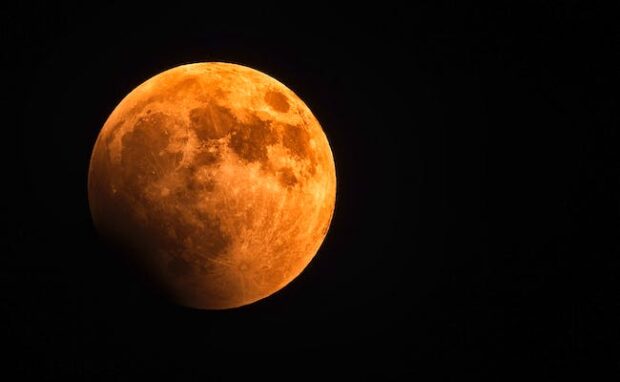NASA heat shield could enable Mars surface deliveries
The National Aeronautics and Space Administration successfully tested its new heat shield over the Pacific Ocean. NASA said it will use the technology to help spacecraft land on Mars and Venus. It could protect equipment, experiments, and astronauts as they descend into these planets.
Space agencies worldwide have been developing incredible devices to help us uncover more of the universe’s secrets. However, outer space is harsh, so we must protect these innovations against its risks. Fortunately, NASA’s heat shield or aeroshell could protect future space missions so that they could conduct new experiments on heavenly bodies.
This article will discuss how the NASA aeroshell or heat shield functions. Later, I will cover some of the other recent Mars and Venus discoveries.
How does the NASA heat shield work?
The space agency’s aeroshell works like a “reverse parachute.” It deploys at the bottom of a spacecraft instead of above to stabilize its descent. More importantly, it prevents extreme heat and pressure from disintegrating NASA craft before it reaches a planet’s surface.
Otherwise known as the Low-Earth Orbit Flight Test of an Inflatable Decelerator (LOFTID), the NASA heat shield’s first test was on November 10, 2022. It launched from the United Launch Alliance (ULA) Atlas V rocket and demonstrated a successful inflatable aeroshell.
The Hypersonic Inflatable Aerodynamic Decelerator (HIAD) aeroshell could help large spacecraft to safely descend through the atmosphere of Mars, Venus, and Saturn’s moon, Titan.
“Large-diameter aeroshells allow us to deliver critical support hardware, and potentially even crew, to the surface of planets with atmospheres. This capability is crucial for the nation’s ambition of expanding human and robotic exploration across our solar system,” said Trudy Kortes, director of the Technology Demonstrations Missions (TDM) program.
You may also like: NASA soon to fly first ‘mini helicopter’ on Mars
LOFTID Project Manager Joe Del Corso explained the NASA heat shield’s launch. This new technology followed these steps:
- The ULA Atlas V rocket deployed the HIAD aeroshell over the African continent.
- Next, the LOFTID separated from the ULA Centaur upper stage. Meanwhile, cameras observe the device.
- Minutes before it reaches the ocean, the LOFTID shoots out another camera to record more footage of the aeroshell’s descent.
- Lastly, it splashed down in the Pacific Ocean several hundred miles away from Hawaii’s east coast.
Crews involved with the NASA heat shield regarded its launch as a monumental success. “This was a keystone event for us, and the short answer is: It was highly successful,” said Del Corso. “Our assessment of LOFTID concluded with the promise of what this technology may do to empower the exploration of deep space.”
What are the recent Mars and Venus developments?

The NASA heat shield could protect a more important space project: equipment for building lunar homes. Believe it or not, the space agency aims to have people stay on the Moon’s surface.
Even better, those houses might be made of mushrooms. They are part of a collaborative project involving MIT, NASA, and the US-based architecture firm Red House. Christopher Maurer, Red House’s principal architect, explained its unique properties “act like a glue to bind substrates [such as construction debris and plants] together.”
The waste biomass will come from Namibia’s infamous “encroacher bush” and will nurture the mycelium’s growth. However, it’s more difficult to grow in outer space “because there’s nothing for mycelium to grow on,” said Maurer. Here’s how Red House plans to grow mushroom homes in outers space:
You may also like: Global heat might become too hot for humans
- An unmanned Mars mission will carry a folded shelter. The latter will contain a sealed bag with dehydrated algae. Euronews Next said it would most likely be chaetomorpha or sea emerald and dormant mycelium.
- Then, a Martian rover would inject carbon dioxide, nitrogen, and water from Mars into the sealed bag to rehydrate the algae. Consequently, it will trigger a reaction that produces oxygen and nourishes the mycelium.
- The mycelium will grow and expand into its intended shape and fuse with the algae to form concrete biomass.
Physicist Heinz-Wilhelm Hubers of the German Aerospace Center (DLR) and his colleagues also discovered one of Venus’ unique properties. They found atomic oxygen in its dayside atmosphere.
“Future observations, especially near the antisolar and subsolar points but also at all solar zenith angles, will provide a more detailed picture of this peculiar region and support future space missions to Venus,” the researchers wrote.
Conclusion
NASA developed an aeroshell to facilitate landing equipment and astronauts on the surface of Venus and Mars. It protects them from the extreme heat and pressure of these planets so they can perform unique experiments.
The space agency said this inflatable heat shield is a more viable option for larger equipment instead of rigid alternatives. However, scientists are still observing the plasma forming around the aeroshell.
Further research and development could explain why its plasma changes colors. Learn more about the latest digital tips and trends at Inquirer Tech.